Ablation damage characterization and tensile residual strength influence factors analysis for composite coupons subjected to lightning strike
2020-12-04LIUYuanFeiZHANGYuYINJunJieZHOUBinHUIJunHuaPENGDeZhen
LIU Yuan-Fei,ZHANG Yu,YIN Jun-Jie,ZHOU Bin,HUI Jun-Hua,PENG De-Zhen
(1.Aeronautics Engineering College,Air Force Engineering University,Xi'an 710038,China; 2. 92728 unit,Air Force of the CPLA,Shanghai 200040,China; 3. College of Information and Communication,National University of Defense Technology,Xi'an 710106,China; 4.94347 unit,Air Force of the CPLA,Zhengzhou 450003,China)
Abstract: To characterize composite lightning ablation damage,mechanical material properties degradation model due to lightning strike ablation damage was presented based on the method of phenomenological analysis. A 3D progressive damage degradation model with lightning ablation damage on composites was constructed using the method of continuum damage mechanics ( CDM) ,in which Hashin and Yeh delamination failure criteria were employed to verify the occurrence of failure point. According to the model constructed,residual strength of composite coupons with lightning ablation damage under tensile load was predicted through ABAQUS software combining the UMAT subroutine,which was coded by the stiffness matrix progressive damage degradation model. Tensile residual strength simulation accuracy demonstrates the ef ciency of the constructed model.
Keywords: Ablation damage; Composite coupons; Tensile residual strength; Influence factors; Lightning strike
1 Introduction
According to the airliner statistics,aircrafts always suffer from lightning strike,the natural phenomena[1-2]. Due to the better mechanical properties and outstanding design characteristics,CFRP (carbon fiber reinforced polymer) composites have been widely used in aerospace[3-4]. However,one of the main drawbacks of composites when compared with traditional metallic materials is the inferior electrical conductivity (1/1000 of aluminum alloy’s). Other than metallic structure,when lightning hits composites,the heating,shockwave and magnetic force will cause damages like fiber fracture,resin pyrolysis and delamination,which may decrease performance and result in serious consequence[5].
Currently,researchers have conducted some artificial lightning tests[6-9]and coupled thermal-electrical simulation[10-17]to investigate composite lightning strike thermal ablation damage caused by resisting heat and thermal flux,from the respect of damage mechanism,damage types and damage influence factors,and had got some achievements. Hiranoetal.[6]investigated the damage behaviors and forming reasons of lightning struck composites. Ferabolietal.[7-8]used tests to compare the damages of lightning strike with impact. Ogasawaraetal.[10],Abdelaletal.[11],Wangetal.[12]and Dongetal.[13-14]studied transient temperature distribution and ablation of CFRP composites based on the proposed models. However,there are few researches on the mechanical properties of composites after lightning strike. With experiments,author in literature [8] did some tests to evaluate the effects of lightning strike damage to composite tension and compression strength. Mall[4]tested the compression strength degradation of the lightning struck nano-composites. Kawakamietal.[18]tested the bending residual strength of scarf-repaired mesh-protected composites through four-point bend approach.
According to these existing literatures,there exist rare research about mechanical properties of lightning struck composites by means of finite element model (FEM),and the greatest difficulty encountered during the simulation research is how to characterize composite lightning ablation damage. For the traditional composite low-velocity impact and hygrothermal damage,researchers had put forward several methods to characterize them,such as method of softening inclusion,damage accumulation and equivalent hole. In this paper,for the lightning strike ablation characterization,according to its characterization revealed from experiment,and by the method of phenomenological analysis,we presented that the mechanical material property degradation extent was related to the degree of resin thermal decomposition,and constructed the stiffness matrix progressive damage degradation model of composite laminate with ablation damage. Based on ABAQUS software,simulations for composite laminate with lightning strike ablation were conducted. Then,combining with the UMAT subroutine,which was coded by stiffness matrix progressive damage degradation model,residual strength of compsoite coupons with lightning ablation damage under tensile load was predicted,and the simulation accuracy demonstrates the efficiency of the constructed model.
2 Theory
2.1 Constitutive relationships of materials
The constitutive relationship between stress and strain for orthotropic composite materials has the form:
{σ}=[C]{ε}
(1)
(2)
Components in stiffness matrix [C] can be expressed by material properties as follow:
C44=G23,C55=G12,C66=G13,
whereEi(i=1,2,3)is elastic modulus;νij(i=1,2,3;j=1,2,3;i≠j) is Poisson’s ratio;G23,G31,G12are shear modulus.
2.2 Lightning strike ablation damage of composite laminates
2.2.1 Material property degradation model with lightning strike ablation During lightning strike,temperature at lightning strike attachment point and nearby region will increase rapidly due to the act of resistive heating. Once the resin thermal decomposition temperature is satisfied,it will be decomposed gradually accompany with the increasing temperature. When the degree of decomposition is limited,composite material properties change little,and accompany with the thermal decomposition of resin,material properties descend gradually. Once resin decompose completely,we can also assume that the composite material properties degrade completely,and then,it cannot bear load any more. It can be explained through the point of view: in the territory with resin decompose completely,the internal resin decomposed gases will expand rapidly,under the act of which the bareness carbon fiber is fractured,and sketch map is shown in Fig.1. Based on the above perspective,we put forward the material property degradation model due to lightning strike ablation damage as follow: when the temperature is lower than the thermal decomposition initial temperature,composite material properties remain the same as origin; when the temperature locates in the range of the thermal decomposition temperature,composite material properties change linearly with the degree of decomposition; when the temperature is higher than the thermal decomposition termination temperature,composite material properties are zero,but for the sake of improving the convergence of simulation,we assumed that the composite material properties are 0.001 times as much as the initial material properties.
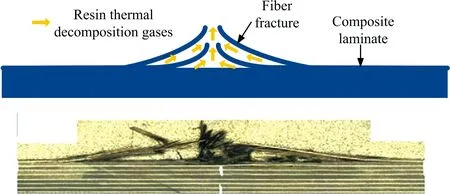
Fig.1 Fractured carbon fiber under the act of resin thermal decomposition gases
Set parameterKas the composite initial material property (elastic modulus and shear modulus change with the degree of decomposition would be taken into account),andt0is the thermal decomposition initial temperature;t1is the thermal decomposition termination temperature. During the whole temperature rising process,composite material properties can be expressed as:
(3)
whereα(T)denotes resin decomposition degree,and temperatureTdetermines the rate of the decomposition. For thermosetting resin,the decomposition kinetics can be estimated as[19]
(4)
whereAis pre-exponential factor,βis constant heating rate,Eαis activation energy,R(8.314 J/mol/K) is universal gas constant andnis reaction order.
By separation of the variables[20],
(5)
then
(6)
Thus,with a temperature function,the decomposition degree can be shown.
2.2.2 Characterization of lightning strike ablation damage The existence of ablation damage will induce the degradation of material properties,and chapter 2.2.1 gave the material properties degradation model due to the ablation damage. Thus,according to phenomenological analysis method,the lightning strike ablation can be characterized based on constructing the stiffness matrix progressive damage degradation model of composite laminate with ablation damage. Set matrix [Cd,s]as the stiffness matrix of composite laminate with ablation damage,combing Eq. (2) and Eq. (3),it can be expressed as:
(7)
In order to keep the material properties at temperaturet1consist with the material properties when temperature higher thant1,maximum value ofα(T) is 0.999.
2.3 Composite laminate progressive damage analysis based on CDM
2.3.1 Damage characterization First,the material coordinate system is defined: 1 represents the longitudinal direction of the fiber; 2 and 3 indicate the transverse directions of the fibers. Here we adapt a second-order symmetric tensorDto define material damage,its eigenvaluesdi(i=1,2,3)represent the descending degree of the effective bearing area on the three main directions,which also can represent the damage variables for the delamination. The value of damage variablesdimust be in the range of 0 to 1,wheredi=0/1 denotes the perfect/complete-damaged material[21].
(8)


(9)
whereM(D) is damage operator,and
(10)
By the energy equivalence assumption,
(11)

Taking Eq. (9) into Eq. (11),the elastic strain energy density is
(12)
According to Eq. (12),we can get the relationship between the effective strain and the nominal strain:
(13)
Using[Cd] to present the stiffness matrix of damage material,and combing Eq. (1),Eq. (12) and Eq. (13),[Cd] has the form:
[Cd]=M(D)-1[C](M(D)T)-1
(14)
2.3.2 Initial failure criteria Hashin[22]and Yeh delamination failure criteria[23]were employed to verify the occurrence of a failure point.F1,F2andF3were adopted to describe the initial failure criteria of fiber,resin and delamination respectively. When composite laminate has internal damage,the stresses in local damage territory distribute complexly and change violently. However,the strains’ distribution changes continuously and smoothly,thus,initial failure criteria based on effective strains is more suitable for describing the progressive damage evolution of composite structure. Without regard to the condition of shear nonlinearity,Hashin and Yeh delamination failure criteria have the following general forms based on the effective strains[24]:
(15)
(16)
(17)

2.3.3 Damage evolution In the initial failure criteria,whenFiis less than 1,the material is non-damaged. WhenFiequal to 1,the material is damaged,and any further loading will cause the degradation of material stiffness coefficients,and at this time,by adopting the degradation model of material properties based on exponential material damage evolution law,calculation formula for damage state variables can be described as[25]:
(18)

3.1 Experimental approach
3.1.1 Material and specimen preparation Aircraft typical carbon woven fabric/epoxy (CCF300/5228A) laminates were tested,and the portion of carbon fibers is approximate to 55%. The test coupons were designed according to GB/T3354-2014[26],with its dimension 90 mm×44 mm×4 mm. Each coupon has 16 plies (0.25 mm) carbon woven fabrics,and the ply orientation angle is [(0/90F)]. Its mechanical and electrical/thermal material properties at room temperature are listed in Tab.1 and Tab.2.

Tab.1 Mechanical material properties of CCF300/5228A composites

Tab.2 Electrical/thermal material properties of CCF300/5228A composites[27]
3.1.2 Artificial lightning testing Impulse current generator for lighting test is shown in Fig.2 (a). For less contact resistance,test specimens should be fixed in the test jig completely. The specimens have the same electric potential,and conductive silver sol and copper foil are covered on the surfaces. The copper probe locates upon the center of the specimens and the distance is 1 mm.
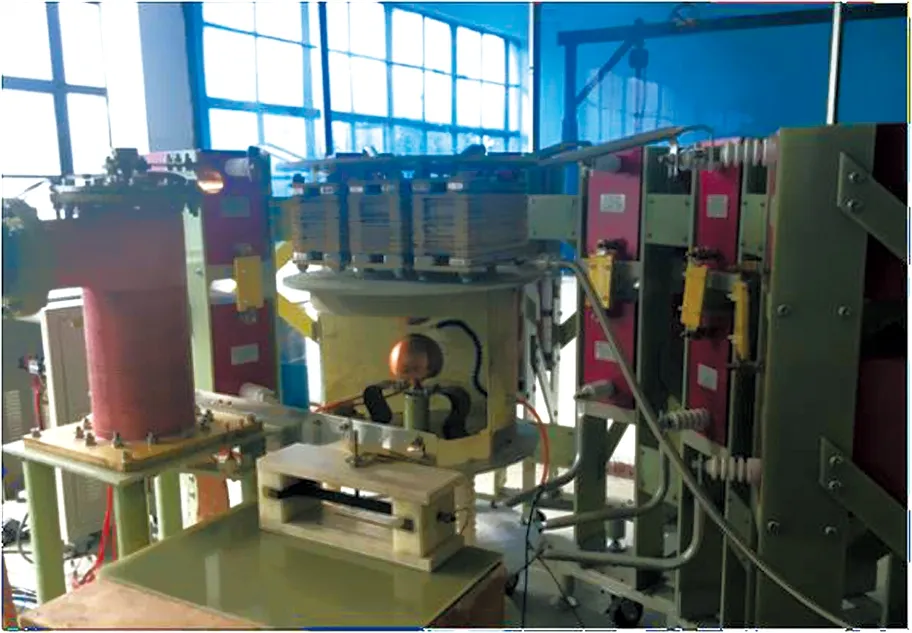

(a)Impulse current generator (b)Test jig
i(t)=I0(e-α t-e-β t)
(19)
whereI0is current constant,αandβare the reciprocal values of wave tail and front time constants. For the expression of current waveform with the double exponential equation,T1andT2are introduced,whereT1is the maximum current arrival time,T2is the arrival time at 50% of the maximum current.
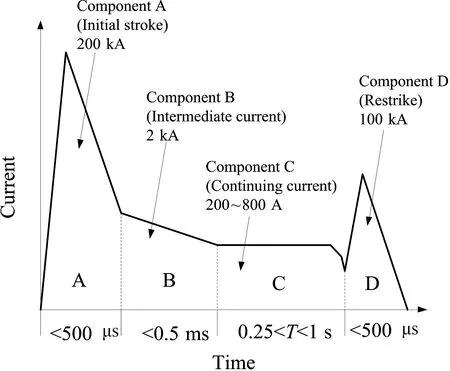
Fig.3 Simulated normative lightning current waveforms
Component D,the restrike of lightning infliction,was set for the test,and the conditions,parameters are shown in Tab. 3.
3.1.3 Tensile residual strength testing The apparatus of tension test is MTS 880~500 kN. In this paper,tensile residual strength test specimens were divided into two groups: one is tensile test for un-damaged composite coupons,numbering S0-1~S0-3; and the other one is tensile test for post-lightning composite coupons,which is shown in Tab. 3. Tensile test was carried out according to GB/T 3354-2014,four aluminium strengthening plates were bonded to each specimen tension face before test. Application of tensile load was adopted by the displacement-controlled manner,and loading rate was 1.5 mm/min,recording the load-displacement curves during the whole test.

Tab. 3 The conditions and lightning strike parameters in the test
3.2 Finite-element models
In order to predict the tensile residual strength of composite coupons with lightning ablation using FEM method,the analysis process can be divided into two steps: first,when lightning strike,the transient temperature field was obtained by ABAQUS and the thermal decomposition behavior of resin was combined to simulate composite lightning strike ablation damage due to resistance heating; second,based on ABAQUS/Standard and combining UMAT user subroutine coded by stiffness matrix progressive damage degradation model,residual strength was predicted under tensile load for composite laminate with lightning strike ablation damage,and during this step,the transient temperature field result in first step was regarded as the predefined temperature field.
For the same type composite coupons in this paper,its lightning strike ablation damage analysis mathematical model and FEM were detailed shown in reference[27,29],and the relative theory and method will not be restated here. Material thermal/electrical properties under different temperatures were shown in reference[27].
According to the method introduced in literature[27,29],FE model is established according to the test specimens,and the length = 290 mm,the width = 44 mm (Fig. 4),and the electrical currents (in Tab. 3) were injected strictly into the model.
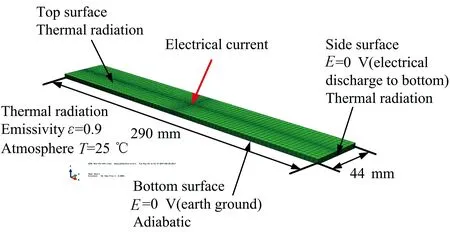
Fig.4 Composite FE model exposed to simulated lighting current
For the assessment of the tensile residual strength of composite coupons with lightning strike ablation damage based on ABAQUS/Standard,element type was C3D8R. One side of the coupon was fixed and the other one applied a displacement load as the boundary conditions. The transient temperature field result got by the coupled thermal-electrical analysis was regarded as predefined temperature field. By combing UMAT user subroutine,the tensile residual strength was calculated.
4 Results and discussion
4.1 Comparison between FEM and experimental results
To verify the accuracy of the simulation results,tensile residual strength comparison between FEM and experiment are shown in Tab. 4. According to Tab. 4,we can see that the compared errors of tensile residual strength between test results and simulation results under different peak current are all less than 4%.
Fig.5 shows the tensile damage mode compared results between FEM and experiment,including un-damaged composite coupons and composite coupons with lightning ablation (Fig.5). The tensile damage mode simulation results is in accordance with experiment well,for un-damaged composite coupons,under tensile load,its failure location locates at both ends of the coupons; but for composite coupons with lightning ablation damage,its failure location locates at the ablation damage territory of the coupons. As a result,the model established in this paper is applicable.
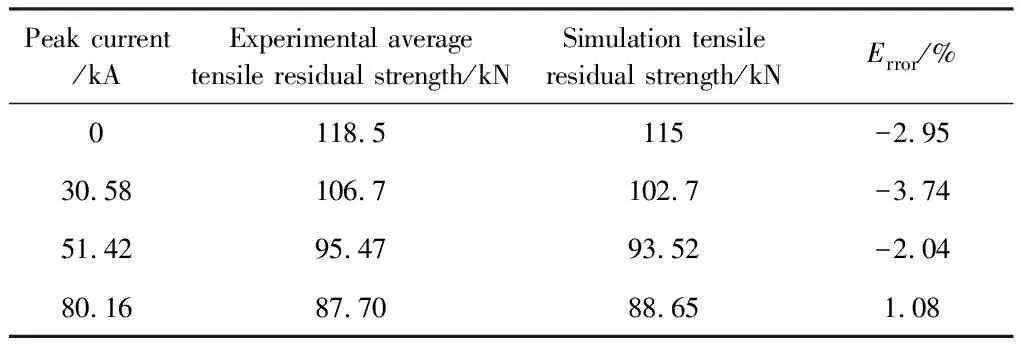
Tab.4 Tensile residual strength in the experiment and simulation
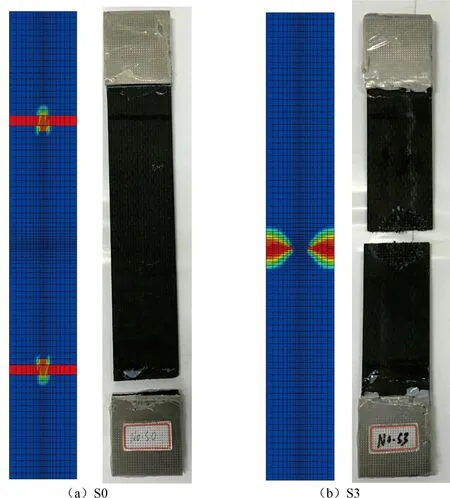
Fig.5 Damage mode compared between experiment and simulation
4.2 Tensile residual strength influence factors analysis for post-lightning coupons
4.2.1 Influence of lightning current parameters on tensile residual strength According to literature[29],lightning current parameter such as charge transfer and action integral could be introduced for composite lightning strike ablation characterization,and power function exists for both the parameters above and the ablation damage. In this paper,based on the tensile residual strength prediction FEM model,the influence of lightning current parameters on the degradation extent of composite coupons tensile strength was investigated,which verifies the characterization parameters of tensile residual strength. Tab. 5 shows the lightning current analyzed parameters and their corresponding tensile residual strength simulation results.
The influence of charge transfer and action integral on tensile residual strength of composite coupons are shown in Fig.6. According to the scatter points change trend,with increase of the two lightning current parameters,tensile residual strength decreased. To study the relationship between lightning current parameters above and tensile residual strength,regression of the degradation extent of composite coupons tensile strength and lightning current parameters above were investigated based on the power function,red curves in Fig.6 represent the fitting curves,and the fitting results are shown in Tab. 6,in which we can see that,both the charge transfer and the action integral show power function with tensile residual strength,but when compared the related indexesR2got in Tab.6 between the charge transfer and the action integral,under the
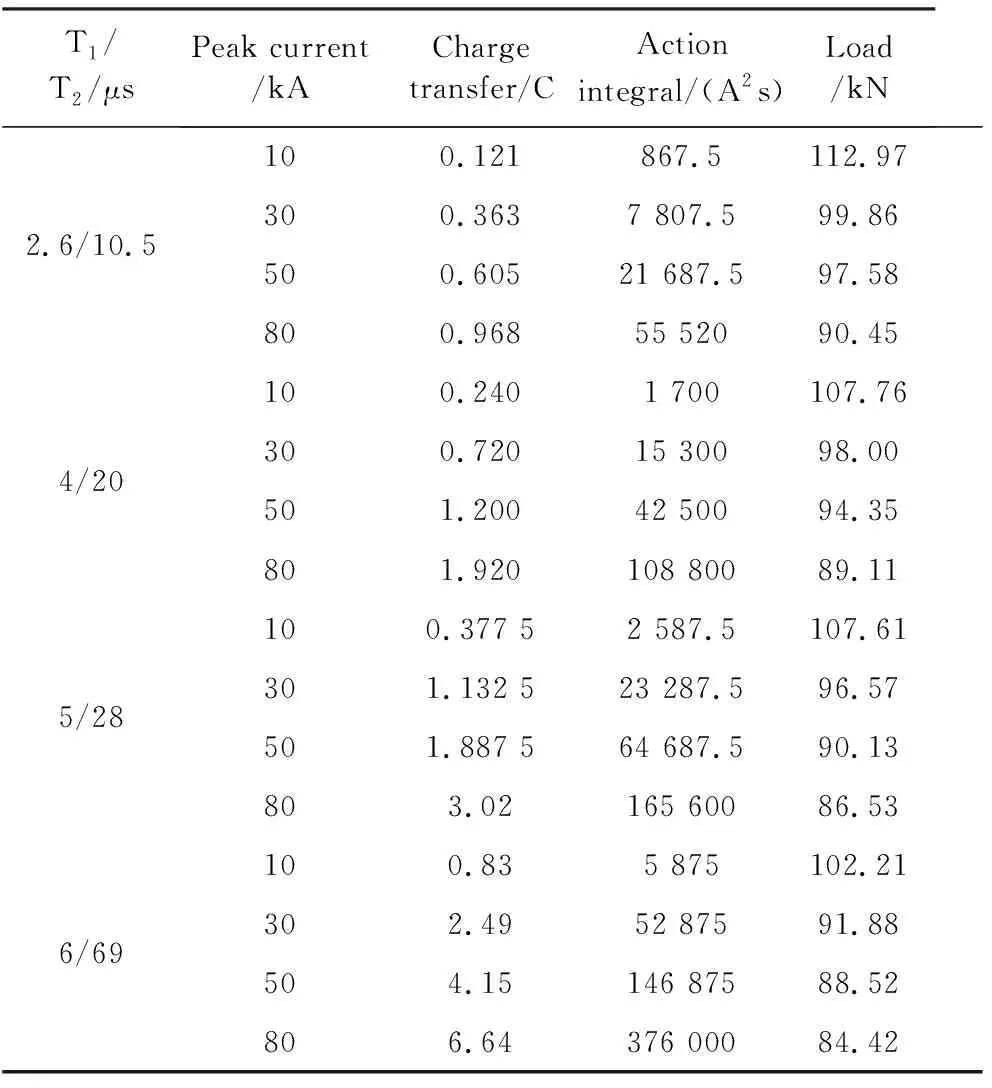
Tab.5 Relationship between tensile residual strength and lightning current parameters
power function,the related indexesR2of the charge transfer is 0.888 3,and that of the the action integral is 0.987 7,so the compared results indicate that the action integral could be the better degradation extent characterization.
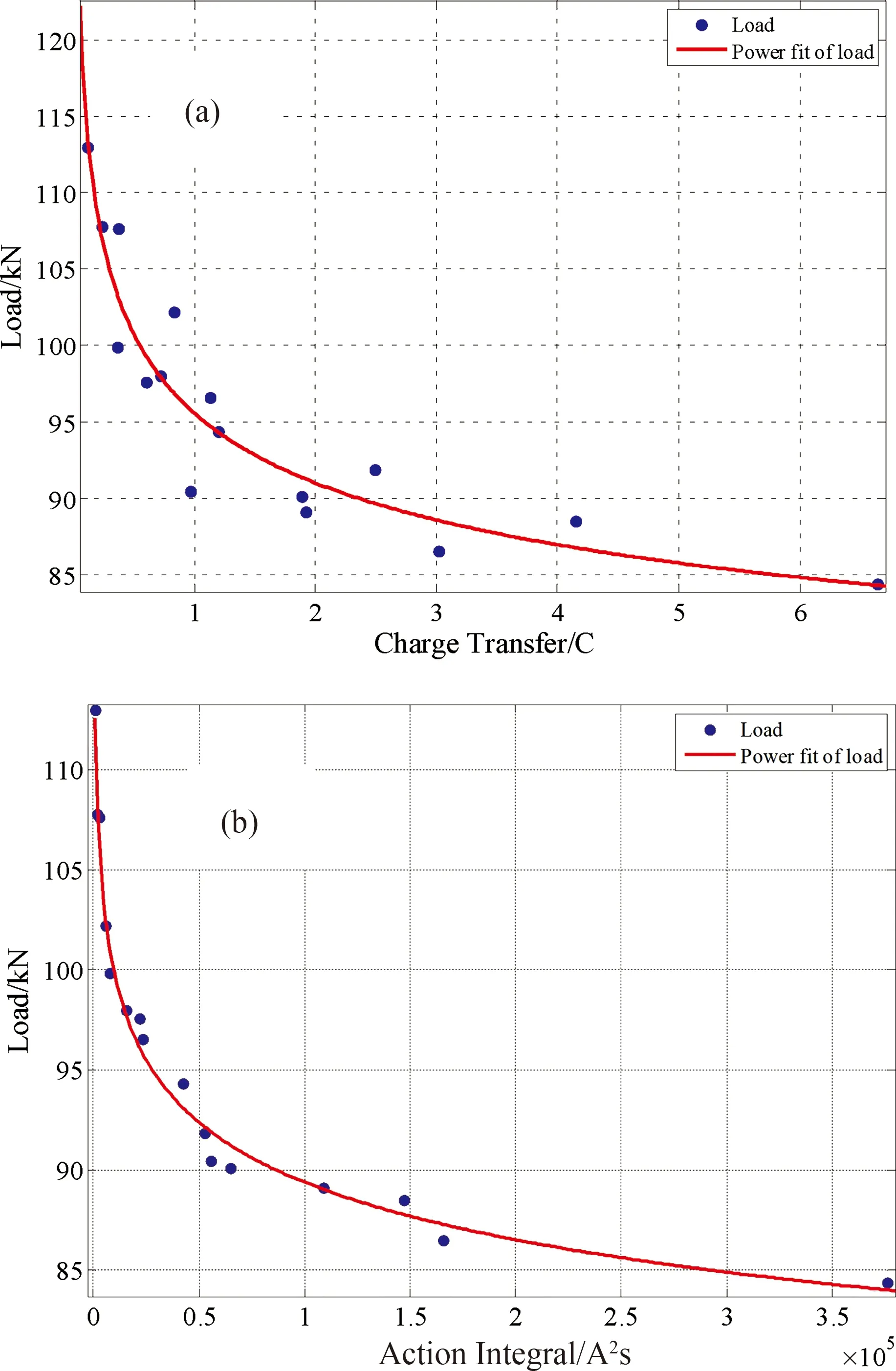
Fig.6 Effects of charge transfer (a) and action integral (b) on tensile residual strength
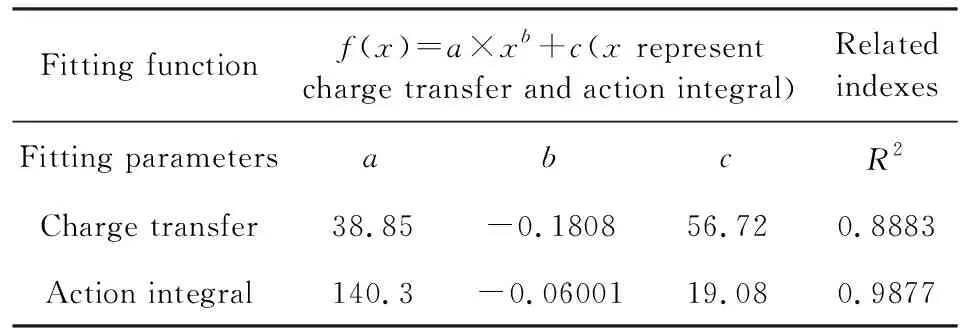
Tab.6 Fitting results between lightning current parameters and tensile residual strength
From Fig. 6,it can be easily seen that when the composite was subjected to a relatively small intensity of the lightning current (action integral less than 5 000 A2s),the decrease rate of the tensile residual strength of composite coupons was quick,and with the increase of lightning current intensity,tensile residual strength decrease rate became slower. According to the damage extent induced by lightning current,when the lightning current intensity was less than a certain degree,the lightning damage would be confined within the width of the coupons,right now,energy of the lightning current was mainly consumed by forming lightning damage,and the area and depth of the lightning damage increased quick. Therefore,tensile residual strength of composite coupons with lightning ablation damage decreased quick first. However,when the lighting current was higher than the certain value,lightning damage would be outside of the width of the coupons,because the lightning damage territory had a higher electrical conductivity due to high temperature,combined with the boundary conditions of FEM,lightning damage territory would form a steady current conduction channel along the width direction of the coupon,and a lot of lightning current will be conducted away through the channel,at this time,new lightning damage would be hardly formed,especially in the thickness direction,thus,tensile residual strength of composite coupons with lightning ablation damage decreased smoothly. In literature [29],relationships between action integral and lightning damage area and depth were clarified,and the same results as analysis above were shown.
4.2.2Influenceofthermal/electricalpropertiesontensileresidualstrengthAccording to literature[29],thermal conductivity of the composite will also hardly affect the tensile residual strength of composite coupons with lightning ablation damage. Therefore,in this paper,we are mainly focus on the effects of composite electrical conductivity and specific heat on the degradation extent of composite coupons tensile strength. When simulating,the lightning current waveform remained 6/69 μs and the peak current reached 80 kA. Tab. 5 shows the tensile residual strength under this lightning parameter when composite coupon had the original thermal/electrical properties.
Fig.7 shows the simulation tensile displacement-load curves of composite with lightning ablation damage under different electrical conductivity and specific heat. From Fig.7 (a),during the increasing of electrical conductivity from 3.25×104S/m to 3.25×107S/m,tensile residual strength of composite coupons with lightning ablation damage increased obviously. If the electrical conductivity was double,treble and quadruple of the original,tensile residual strength were 90.45,105.32 and 110.3 kN respectively,and compared with that of original electrical conductivity,the tensile residual strength respectively increased by 7.14%,24.76% and 30.66%. According to the simulation results in Tab. 4,tensile strength of the undamaged composite coupon was 115 kN,thus,if the electrical conductivity was double,treble and quadruple of the original,the corresponding tensile residual strength kept 78.65%,91.58% and 95.91% than that of the undamaged composite coupon,visibly,if the electrical conductivity was higher than the treble,tensile residual strength would keep higher than 90% than that of its undamaged state. From Fig.7 (b),during the increasing of specific heat from 1 065 to 10 650 J/kg℃,tensile residual strength of composite coupons with lightning ablation damage increased also. When the specific heat were two,five and ten times than the original,tensile residual strength were 87.50,88.52 and 91.44 kN respectively,compared with that of original specific heat,the tensile residual strength respectively increased by 3.65%,4.86% and 8.32%,and compared with the undamaged composite coupon,when the specific heat were two,five and ten times than the original,the corresponding tensile residual strength kept 76.09%,76.91% and 79.51% than that of the undamaged composite coupon.
The tensile residual strength of composite coupons with lightning strike ablation damage under different electrical conductivity and specific heatwere simulated,then after regression analyzing,Fig. 8 shows the fitting curves of tensile residual strength,power function was selected as the analysis function,and mathematical model between tensile residual strength and electrical conductivity and specific heat were been constructed,as is shown in Tab. 7,the related indexesR2between tensile residual strength with electrical conductivity and specific heat were 0.9605 and 0.946 2 respectively.
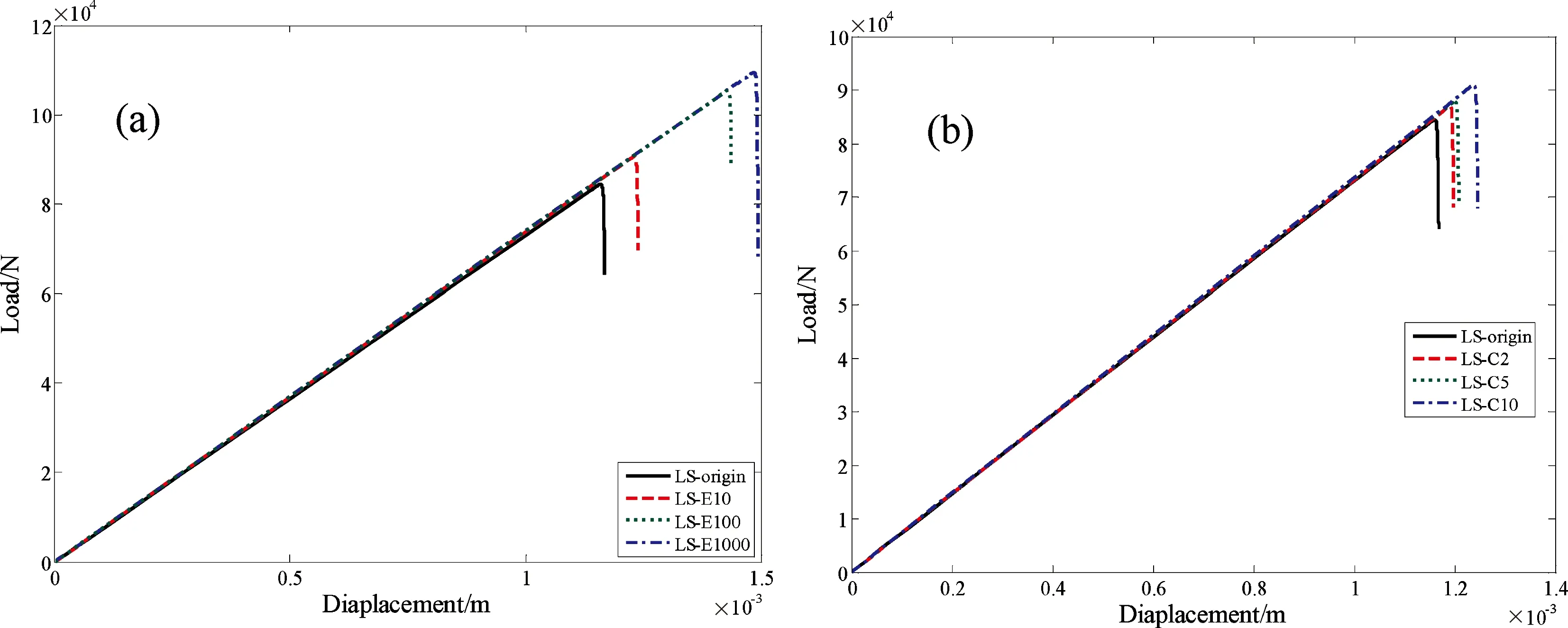
Fig.7 Tensile displacement-load curves under different electrical conductivity (a) and specific heat (b)
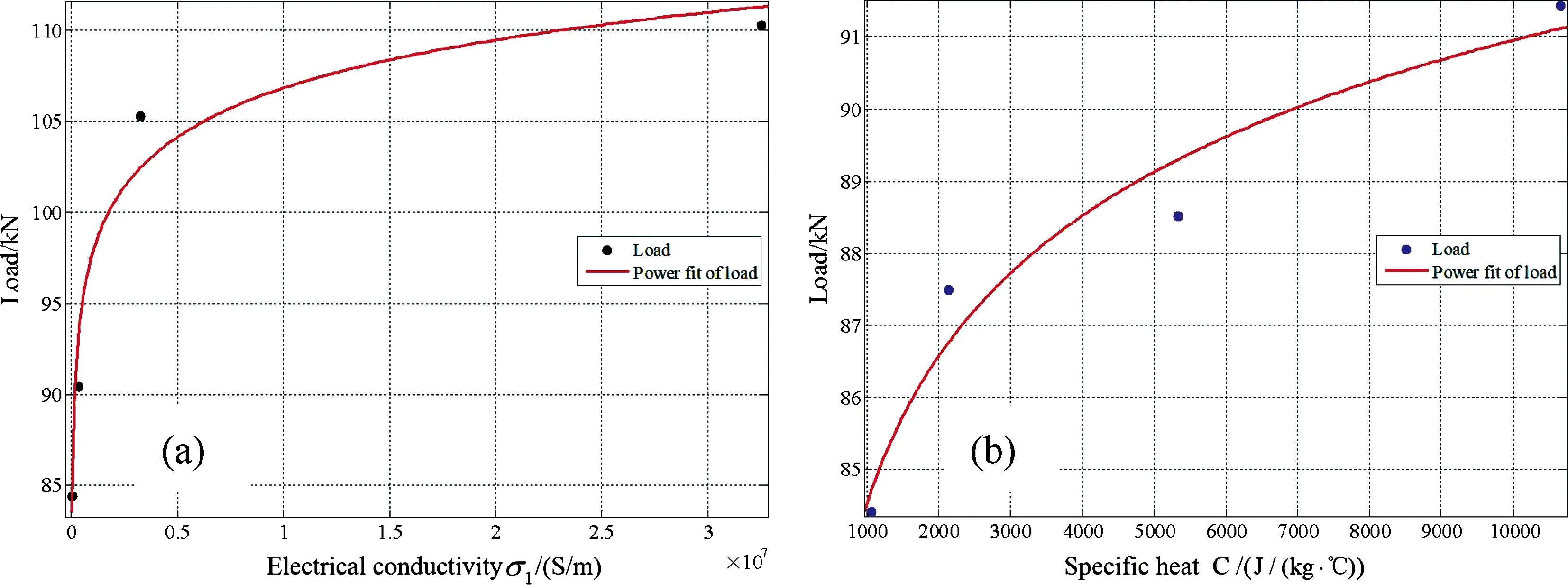
Fig.8 Effects of electrical conductivity (a) and specific heat (b) on tensile residual strength

Tab.7 Fitting results between material electrical/thermal properties and tensile residual strength
Thus,by means of enhancing the composite electrical conductivity and specific heat,tensile residual strength of composite coupons with lightning ablation damage could be increased distinctly. Furthermore,influence of enhancing electrical conductivity on enhancing tensile residual strength was most remarkable,and if the electrical conductivity was higher than the treble,tensile residual strength would keep higher than 90% than that of its undamaged state.
5 Conclusions
By the means of phenomenological analysis,material properties degradation model due to lightning strike ablation damage was presented to characterizing composite lightning ablation damage. A 3D progressive damage degradation model for composite with lightning ablation damage was constructed by the method of continuum damage mechanics (CDM),based on that residual strength of composite coupons with lightning ablation damage under tensile load was predicted through ABAQUS software and UMAT subroutine,which was coded by the stiffness matrix progressive damage degradation model. The accuracy of FEM was verified with the comparison of composite tensile experimental data from residual strength and damage mode.
Influence of lighting current parameters and thermal/electrical properties of composite on degradation extent of composite coupons tensile strength were simulated and analyzed. It is shown that tensile residual strength of composite coupons with lightning strike ablation is distinctly influenced by lightning current charge transfer and action integral,and there exists strong power function between tensile residual strength and action integral,and with comparison of charge transfer and action integral,action integral could be used for the degradation extent characterization better. Composite own thermal/electrical material properties,such as electrical conductivity and specific heat,could affect the tensile residual strength. When the lightning current parameters are constant,if the electrical conductivity was double,treble and quadruple of the original,the tensile residual strength respectively increased by 7.14%,24.76% and 30.66% ,and the corresponding tensile residual strength kept 78.65%,91.58% and 95.91% than that of the undamaged composite coupon,visibly,if the electrical conductivity was higher than the treble,tensile residual strength would keep higher than 90% than that of its undamaged state. When the specific heat were two,five and ten times than the original,the tensile residual strength respectively increased by 3.65%,4.86% and 8.32%,and the corresponding tensile residual strength kept 76.09%,76.91% and 79.51% than that of the undamaged composite coupon. So there exists strong power function relationship between tensile residual strength and thermal/electrical parameters.
